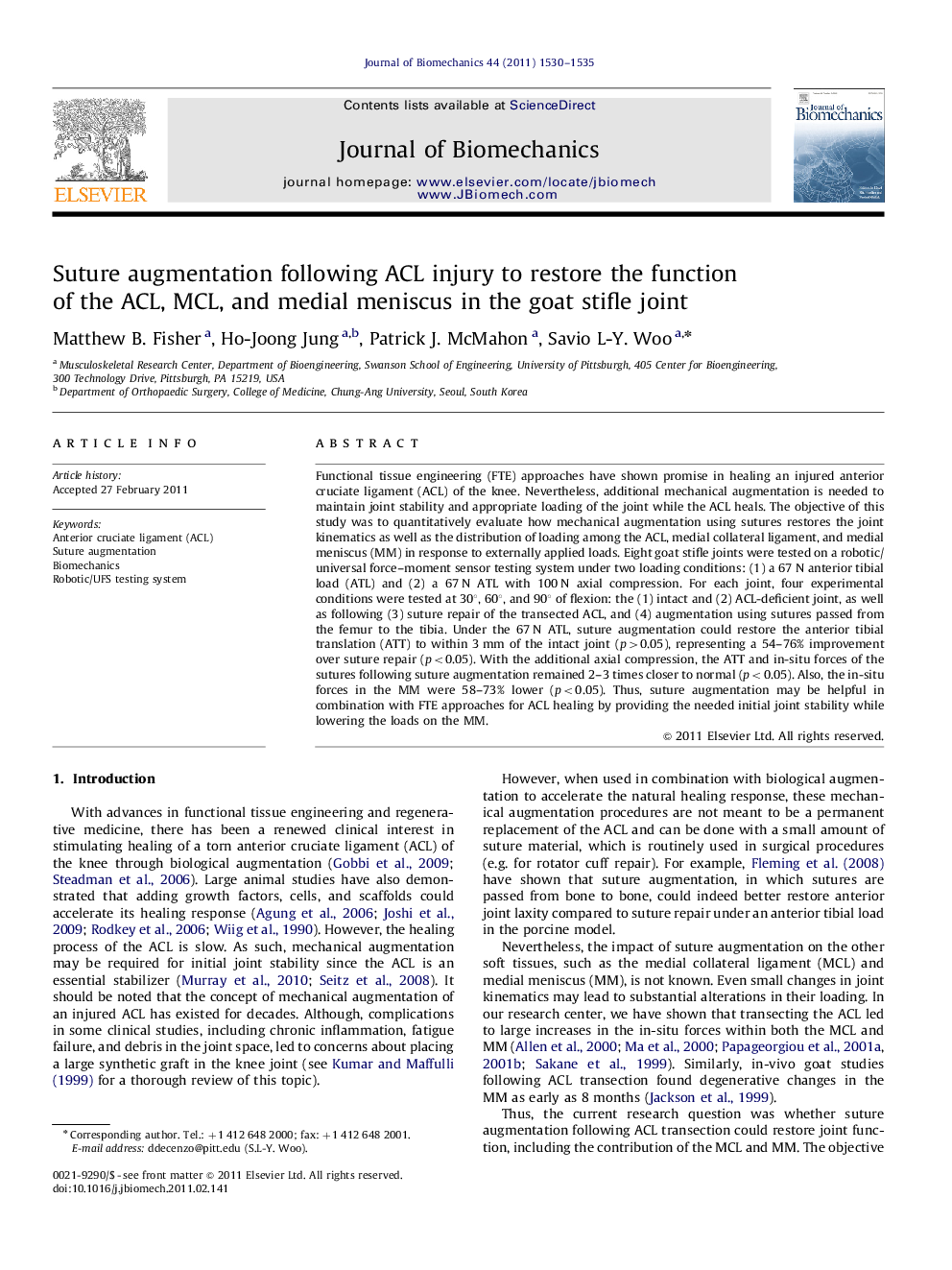| Article ID | Journal | Published Year | Pages | File Type |
|---|---|---|---|---|
| 10433422 | Journal of Biomechanics | 2011 | 6 Pages |
Abstract
Functional tissue engineering (FTE) approaches have shown promise in healing an injured anterior cruciate ligament (ACL) of the knee. Nevertheless, additional mechanical augmentation is needed to maintain joint stability and appropriate loading of the joint while the ACL heals. The objective of this study was to quantitatively evaluate how mechanical augmentation using sutures restores the joint kinematics as well as the distribution of loading among the ACL, medial collateral ligament, and medial meniscus (MM) in response to externally applied loads. Eight goat stifle joints were tested on a robotic/universal force-moment sensor testing system under two loading conditions: (1) a 67 N anterior tibial load (ATL) and (2) a 67 N ATL with 100 N axial compression. For each joint, four experimental conditions were tested at 30°, 60°, and 90° of flexion: the (1) intact and (2) ACL-deficient joint, as well as following (3) suture repair of the transected ACL, and (4) augmentation using sutures passed from the femur to the tibia. Under the 67 N ATL, suture augmentation could restore the anterior tibial translation (ATT) to within 3 mm of the intact joint (p>0.05), representing a 54-76% improvement over suture repair (p<0.05). With the additional axial compression, the ATT and in-situ forces of the sutures following suture augmentation remained 2-3 times closer to normal (p<0.05). Also, the in-situ forces in the MM were 58-73% lower (p<0.05). Thus, suture augmentation may be helpful in combination with FTE approaches for ACL healing by providing the needed initial joint stability while lowering the loads on the MM.
Related Topics
Physical Sciences and Engineering
Engineering
Biomedical Engineering
Authors
Matthew B. Fisher, Ho-Joong Jung, Patrick J. McMahon, Savio L-Y. Woo,
